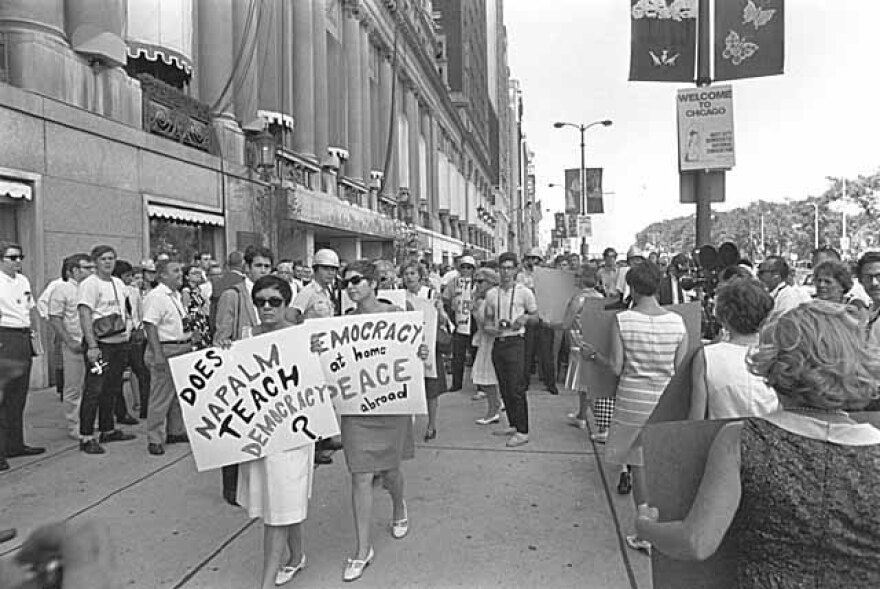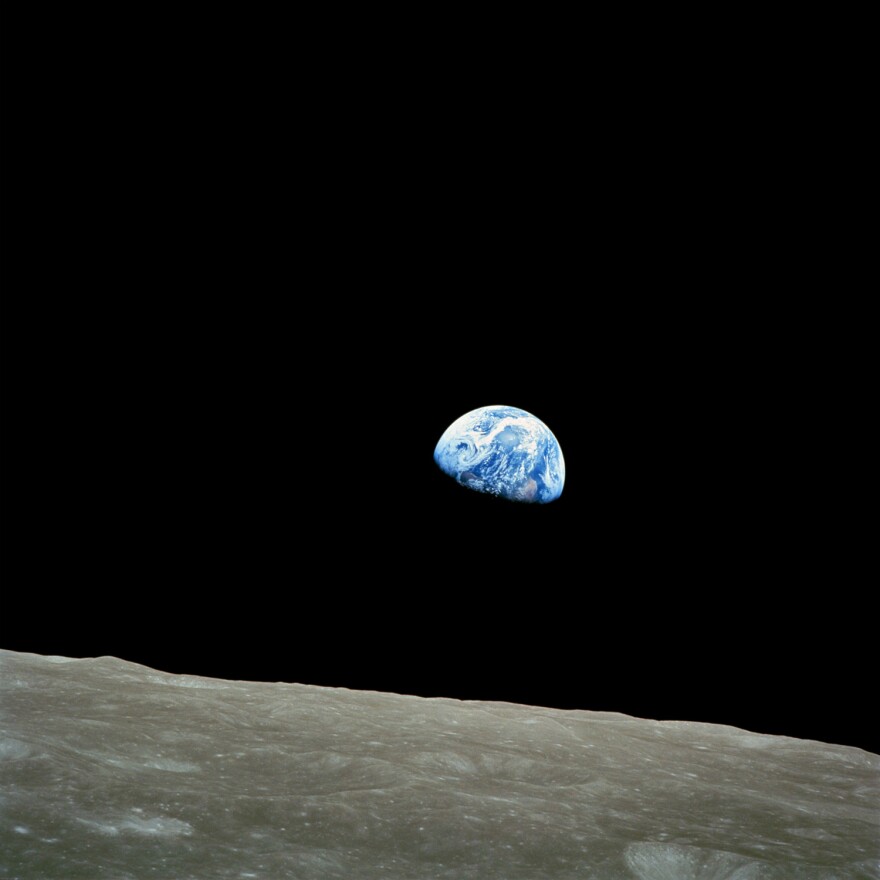This article first appeared in the St. Louis Beacon, Oct. 8, 2013: Assassinations. Activism. Love-ins. “Laugh In.” Bell bottoms. Bombs. The year 1968 was an explosion of world-changing events from the murders of Dr. Martin Luther King, Jr. and Robert F. Kennedy to the ubiquity of the peace sign.
The Missouri History Museum is offering St. Louisans the next-best thing to a way-back machine with “The 1968 Exhibit.” The traveling show opened Saturday, Oct. 5 and continues into early January.
During the exhibit’s run, the History Museum will offer several related events including movies, a play written by local teens and two“Discovery Tours,” Oct. 26 and Nov. 2, walking back in time to where St. Louisans spent the 1960s.
Gwen Moore, curator for “The 1968 Exhibit," talked with the Beacon about its examination of a pivotal year in U.S. and local history.
St. Louis Beacon: Why was it important for the History Museum to book “The 1968 Exhibit?”
Gwen Moore: 1968 was such a year of turmoil and tumult, not just nationwide but here as well -- we were part of that. We don’t divorce ourselves form national events, we’re part of national events, we make national events.

There is the fun part but we don’t neglect the serious and somber parts of what was going on in 1968. One big thing, of course, was the Vietnam War and the protests that were going on.
What this exhibit does is try to cover the whole gamut of what was happening in 1968, starting in January and ending in December with the launch of Apollo 8, which went to the moon. There’s something there for everybody. It talks about the women’s movement. It talks about the rise of the black power movement, the student movement, the rise of conservative politics.
How are the assassinations of Dr. Martin Luther King, Jr. and Robert Kennedy remembered?
Moore: Martin Luther King was, of course, assassinated in April of that year, and we have objects on loan from the Ebenezer Baptist Church [where King and his father were pastors]. There are excerpts of Martin Luther King’s speech he gave the before his assassination. There are oral history excerpts of people talking about Dr. King and his legacy.
When we get to June, when Robert Kennedy was assassinated, one of the key objects is the camera that was used there. And of course, the usual photographs and commemorations of Robert Kennedy and what he was trying to do.
And there is a focus on the way these assassinations impacted the nation. These were two men representing peace, and for their lives to end so violently seems such a contradiction, and seems so wrong.
Are there interactive features in the exhibit?
Moore: People can can sit on bean-bag chairs and watch clips from TV shows that were popular during the ‘60s: “The Monkees,” “Laugh In,” “Star Trek,” “Mission Impossible.”

There’s another lounge that deals with music of the ‘60s, with original album covers and shadow boxes with concert tickets and programs and a “Yellow Submarine” lunchbox. There’s an outfit worn by Janis Joplin.
People even get to design their own album covers, and there’s a 1968 music quiz. It’s to get people to experience the ‘60s, not just look at things. It transports you back to a period in time.
What were some of the more challenging installations?
Moore: The two big items are, one, the Huey helicopter that was actually flown in Vietnam. It had to be taken apart and reassembled, which was done with the help of veterans. And the other is replica of the Apollo 8 capsule, which of course is another massive artifact.
What do you hope kids and others too young to remember 1968 will get out of it?
Moore: There was a very vibrant youth movement. A lot of the protests were fueled by young people who took an active part in trying to change society. It was not only at the college level, but these kinds of protests filtered down to the high schools and even middle schools.
People felt empowered. They felt that, “If I get out there and say, ‘this is wrong,’ it can lead to some meaningful change.”


